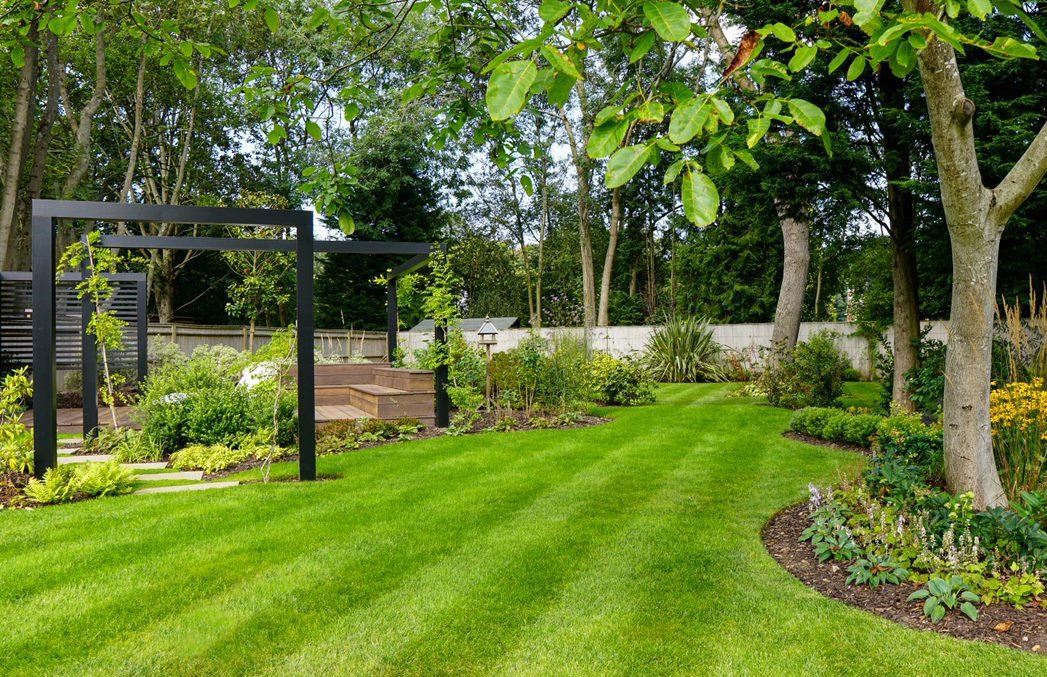
Taking Care Of Your New Garden
A new garden is an exciting investment, but knowing how to care for it can feel overwhelming. Here are some tips to help you maintain you new garden. Remember, an APL Professional Gardener can assist you with garden care. They can keep your garden looking great.
The First 12 Weeks: Your new garden may need a little bit of extra attention in the first few months. Here’s what to focus on:
- Lawn care: Water new turf daily until the roots establish. During the summer months, you may need to water twice a day. Avoid walking on the lawn for the first six weeks to allow the grass to establish properly. Find out more about establishing a new lawn: Royal Horticultural Society (RHS) - Establishing a New Lawn
- Patios & decking: Consider adding sealant to natural stone to prevent stains from food, drinks, and oil. Timber decking benefits from oiling to extend its lifespan and protect against weather damage.
- Planting: If you’re adding plants yourself, a professional planting plan ensures the right plants thrive in the right spaces. Keep newly planted beds and borders weed free and well watered.
- Watering: Keep new plants and trees well-watered, especially in dry weather. Trees require more water than you might think.
- Ponds: Prior to introducing fish, ensure that the water has settled sufficiently. If algae develops, consult a professional on the best way to treat it.
- Expert help: Your APL landscaper or gardener can offer guidance to ensure your garden stays healthy and looks amazing.
Caring for Your Lawn
A healthy lawn enhances your garden’s beauty. Here’s how to keep it looking great:
- Watering: Keep soil moist until the turf is firmly rooted. To check, gently lift a corner of the turf—if the soil underneath is dry, it needs more water.
- Mowing: Wait until the grass is established before mowing. Do a “tug test” by pulling on a handful of grass—if the turf lifts, wait another week before cutting. Use sharp blades and don’t cut more than a quarter of the grass height at a time.
- Feeding: Apply lawn feed about six weeks after laying, if no pre-turfing feed was used. Be sure to follow the instructions carefully, as too much fertilizer can cause damage. Find out more information on fertiliser usage: DEFRA - Using Fertilisers
- Keep off the lawn: Keep pets and children off the lawn as much as possible in the early weeks to allow roots to strengthen.

Looking After Hard Landscaping
- Natural stone: Natural stone, because of its porous nature, is susceptible to staining from liquids beyond rainwater. To mitigate this risk, the application of a sealant is recommended, safeguarding the aesthetic integrity of your paving. If efflorescence, a white residue, appears, you can usually remove it with a brush. It will also fade away on its own in about twelve weeks. For any uncertainties, consultation with your landscaping professional is advisable.
- Porcelain paving: Stain-resistant and easy to clean—wipe spills quickly with a damp cloth. Never use a pressure washer on your porcelain pavers. You only need warm water, detergent, and a garden hose to clean your new hard landscaping feature.
- Decking: Composite decking needs little maintenance, while timber benefits from occasional oiling to protect it from the elements.

Caring for Plants & Trees
- Watering: Keep plants and trees hydrated for the first year, especially in dry spells. A drip irrigation system can help you water more efficiently. An APL landscaper or gardener can set this up for you.
- Mulching: Add a layer of compost, bark, or gravel around plants to retain moisture and suppress weeds.
- Fertilising: Different plants require different nutrients—research or consult a professional before applying fertilisers. Too much can do more harm than good.
- Growth habits: Consider how plants will grow over time—some may need pruning or support as they mature.

Need Help?
If caring for your garden is difficult, you lack time, or you want it to look beautiful, an APL Professional Gardener can assist you. They have the expertise to keep your garden thriving, from lawn care to plant maintenance and hard landscaping upkeep.
Find a local APL gardener here: APL Directory
